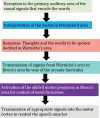Cognitive skills assessment in deaf and hard of hearing school children
- PMID: 40256057
- PMCID: PMC12007772
- DOI: 10.4103/jfmpc.jfmpc_1239_24
Cognitive skills assessment in deaf and hard of hearing school children
Abstract
Introduction: Globally, 466 million (5%) are having hearing disability of which 34 million are children. In India, 63 million people (6.3%) suffer from significant auditory loss. Cognitive abilities in deaf children have been assessed in the past and have shown incongruous results, with some finding that IQ (intelligence quotient) is same in the deaf population and the normal population and some have shown IQ to be less in deaf population. There are however hardly few Indian studies done in this context. Hence, the current study was aimed to assess cognitive skills in deaf and hard of hearing school children using Bhatia's Battery of Performance Test.
Methodology: It was a cross-sectional comparative study; 52 deaf and hard of hearing children and 52 normal children of same age group without hearing or speech impairment from 5th grade onward up to 8th grade were included in the study, and the study was approved by IEC. Bhatia's battery of performance test, which is one of the nonverbal intelligence tests was used to asses cognition in both the groups, the t test was used to compare the differences in the scores between 2 groups.
Results: The mean age of the study population was 12.9 ± 1.12 years, whereas controls were 12.86 ± 1.20. There were 26 boys and 24 girls in each group. Scores of the tests were statistically (P < 0.005) higher in the study group in comparison with the control group. IQ & PQ scores were significantly higher in the study group when compared to the control group.
Conclusion: The results show that deaf and hard of hearing children have an IQ almost similar in fact statistically better than their normal counterpart; this could help the families of these children to move out of the shadow of stigma associated with the disability and provide an opportunity to be trained like their normal counterparts.
Keywords: Bhatia battery of test; deaf and hard of hearing; nonverbal cognitive assessment; theory of mind.
Copyright: © 2025 Journal of Family Medicine and Primary Care.
Conflict of interest statement
There are no conflicts of interest.
Figures
Similar articles
-
Comparison of two nonverbal intelligence tests among children who are deaf or hard-of-hearing.Res Dev Disabil. 2014 Feb;35(2):463-71. doi: 10.1016/j.ridd.2013.11.020. Epub 2013 Dec 20. Res Dev Disabil. 2014. PMID: 24361815
-
The utility of early developmental assessments on understanding later nonverbal IQ in children who are deaf or hard of hearing.Int J Pediatr Otorhinolaryngol. 2017 Jan;92:136-142. doi: 10.1016/j.ijporl.2016.11.024. Epub 2016 Nov 25. Int J Pediatr Otorhinolaryngol. 2017. PMID: 28012515
-
Functional communication of children who are deaf or hard-of-hearing.J Dev Behav Pediatr. 2014 Apr;35(3):197-206. doi: 10.1097/DBP.0000000000000048. J Dev Behav Pediatr. 2014. PMID: 24662616
-
Review of intellectual assessment measures for children who are deaf or hard of hearing.Rehabil Psychol. 2014 Feb;59(1):99-106. doi: 10.1037/a0035829. Rehabil Psychol. 2014. PMID: 24611926 Review.
-
[Hearing impairment and psychopathological disorders in children and adolescents. Review of the recent literature].Encephale. 2003 Jul-Aug;29(4 Pt 1):329-37. Encephale. 2003. PMID: 14615703 Review. French.
References
-
- World Health Organization. Deafness and Hearing Impairment – Fact Sheet. 2010 Apr
-
- Gannon JR. Deaf Heritage: A Narrative History of Deaf America. the University of Michigan: National Association of the Deaf. 2009
-
- Community and Culture – Frequently Asked Questions. National association of the deaf. Updated 2019 Feb 23. [[Last accessed on 2003 Aug 14]]. Available from: https://www.nad.org/resources/americansign-language/community-and-cultur... .
-
- Garg S, Chadha S, Malhotra S, Agarwal AK. Deafness: Burden, prevention and control in India. Natl Med J India. 2009;22:79–81. - PubMed
LinkOut - more resources
Full Text Sources
Miscellaneous

